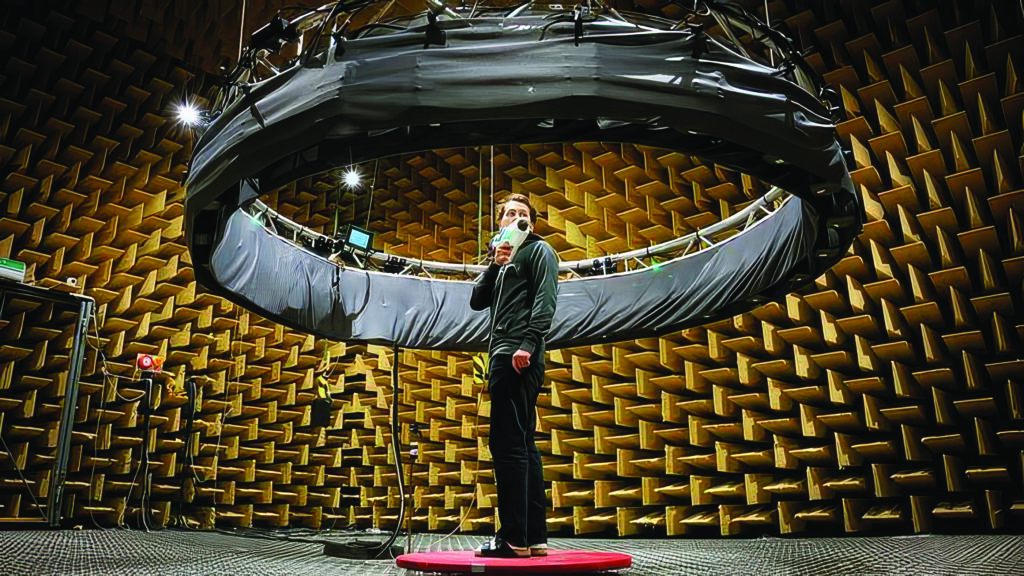Study highlights issues with EV acoustic alerts for sound direction detection
Researchers in Sweden have found that the warning sounds used by EVs can be difficult to locate, writes Nick Flaherty.
As electric cars become more common with silent operation, vulnerable road users are encountering more and more warning signals from them. The team at Chalmers University of Technology in Sweden found that one of the most common signal types is very difficult for humans to locate, especially when multiple vehicles are all moving at the same time.
The team tested out how well people locate three common types of Acoustic Vehicle Alerting System (AVAS) warning signals from hybrid and electric vehicles moving at low speeds. The researchers’ tests showed that all the signal types were harder to locate than the sound of an internal combustion engine. For one of the signals, most test subjects were unable to distinguish the direction of the sound or determine whether they were hearing one, two or more vehicles simultaneously.
Electric and hybrid vehicles meet the requirements set for acoustic warning systems according to international standards. In Europe, plus China and Japan, for example, vehicles travelling at a speed below 20 kph must emit a warning signal consisting of tones or noise, to allow pedestrians, cyclists and other non-car users to detect them. In the United States, warning signals are required from vehicles travelling at speeds of up to 30 kph.
“The way the requirements are worded allows car manufacturers to design their own signature sounds. These warning signals are often tested without the complication of background noise. But in a real traffic environment there are usually many different types of sound,” says Wolfgang Kropp, professor of acoustics at the Department of Architecture and Civil Engineering at Chalmers.
Existing research has focused mainly on detectability and what is usually referred to as detection distance. No previous studies have investigated what happens when two or three cars emit the same type of signal.
“The requirements placed on car manufacturers relate to detection, or detectability, not about locating sound direction or the number of vehicles involved. But if you imagine, say, a supermarket car park, it’s not inconceivable that several similar car models with the same AVAS signal will be moving at the same time and in different directions,” says Leon Müller, a doctoral student at Chalmers.
The experiments involved 52 test subjects in a soundproofed, anechoic chamber.
Each subject was placed at the centre of the room and surrounded by 24 loudspeakers placed in a ring at chest height. Three types of simulated vehicle sounds were played on the loudspeakers, corresponding to the signals from one, two or more electric and hybrid vehicles, plus an internal combustion engine. One of the signals consisted of two tones, one had multiple tones and one was just noise.
The test subjects heard a vehicle warning signal at about 7.5 m away, mixed with pre-recorded background noise from a quiet city car park.
When they heard the signal, the subjects had to mark the direction it was coming from as quickly as possible. The signal comprising two tones coming from three vehicles simultaneously was the most difficult, and none of the test subjects managed to locate all the two-tone signals within the 10 second time limit.
The test subjects were easily able to locate the sound corresponding to an internal combustion engine because this consisted of short pulses comprising all frequencies – something that is easier for the ear to perceive than a fixed tone at a single frequency.
“Naturally, as acousticians, we welcome the fact that electric cars are significantly quieter than internal combustion engines but it’s important to find a balance,” says Müller.
“From a traffic safety point of view, it would be desirable to find a signal that’s as effective as possible in terms of detection and localisation, but which doesn’t affect people negatively; something our previous research has shown to be true of traffic noise,” says Kropp.
Click here to read the latest issue of E-Mobility Engineering.
ONLINE PARTNERS




























